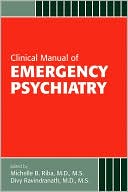Category Books
- Fiction Books & Literature
- Graphic Novels
- Horror
- Mystery & Crime
- Poetry
- Romance Books
- Science Fiction & Fantasy
- Thrillers
- Westerns
- Ages 0-2
- Ages 3-5
- Ages 6-8
- Ages 9-12
- Teens
- Children's Books
- African Americans
- Antiques & Collectibles
- Art, Architecture & Photography
- Bibles & Bible Studies
- Biography
- Business Books
- Christianity
- Computer Books & Technology Books
- Cookbooks, Food & Wine
- Crafts & Hobbies Books
- Education & Teaching
- Engineering
- Entertainment
- Foreign Languages
- Game Books
- Gay & Lesbian
- Health Books, Diet & Fitness Books
- History
- Home & Garden
- Humor Books
- Judaism & Judaica
- Law
- Medical Books
- New Age & Spirituality
- Nonfiction
- Parenting & Family
- Pets
- Philosophy
- Political Books & Current Events Books
- Psychology & Psychotherapy
- Reference
- Religion Books
- Science & Nature
- Self Improvement
- Sex & Relationships
- Social Sciences
- Sports & Adventure
- Study Guides & Test Prep
- Travel
- True Crime
- Weddings
- Women's Studies
Clinical Manual of Emergency Psychiatry »

Authors: Michelle B. Riba (Editor), Divy Ravindranath
ISBN-13: 9781585622955, ISBN-10: 1585622958
Format: Paperback
Publisher: American Psychiatric Publishing, Incorporated
Date Published: April 2010
Edition: (Non-applicable)
Author Biography: Michelle B. Riba
Michelle B. Riba, M.D., M.S., is Professor of Psychiatry and Associate Chair for Integrated Medicine and Psychiatric Services in the Department of Psychiatry at the University of Michigan in Ann Arbor, Michigan. Dr. Riba is Zonal Representative (Area 2, USA) of the World Psychiatric Association and Past President of the American Psychiatric Association.
Divy Ravindranath, M.D., M.S., is a Psychosomatic Medicine Fellow in the Department of Psychiatry at the University of Michigan in Ann Arbor, Michigan.
Book Synopsis
One of the most challenging clinical settings any psychiatrist faces is in the area of psychiatric emergency services. Clinical Manual of Emergency Psychiatry is designed to help medical students, residents, and clinical faculty chart the appropriate course of treatment in a setting where an incorrect assessment can have life and death implications.
Written collaboratively by residents, students, and faculty from various departments of psychiatry in the United States and Canada, Clinical Manual of Emergency Psychiatry covers those topics that are generally the most important and practical in any busy psychiatric emergency department. Equally important, the chapters are arranged by chief complaint rather than by psychiatric diagnosis, and each contains an important summary that can provide clarity quickly when seconds count. This format gives the trainee the ability to quickly find key points for treating the clinical situation. In addition, this text serves as a backup to faculty, and combines the approach of accomplished psychiatry trainees with the views of senior practitioners in the field.
Trainees working in the high-stress psychiatric emergency setting often only have backup supervision by phone rather than in-person oversight. Evaluation of patients in busy psychiatry emergency departments, where first- and second-year residents are quickly trying to address complicated clinical situations with patients who are very ill, is a challenging and difficult process. In response to the specific demands of the psychiatric emergency setting, the authors, under the editorship of Drs. Michelle B. Riba and Divy Ravindranath, made this manual easy to read and clearly focused on presenting complaints. In Clinical Manual of Emergency Psychiatry, trainees and faculty will find:
• Case vignettes of applicable clinical scenarios.
• A reflection of widespread practices in various academic centers.
• Chapters arranged by chief complaint rather than psychiatric diagnosis.
• Key point summaries at the end of each chapter.
• An integrated perspective from trainees and experienced psychiatrists.
In addition, many of the chapters in this book underscore the potential for “medical mimics” to cause the presenting complaints, including anxiety, depression, psychosis, catatonia, and cognitive impairment. The recognition that comorbid conditions are often present is critical to the complete assessment of patients in a psychiatric emergency setting.
This book is a must-have for any psychiatric trainee or faculty who works in the often tense and high-stakes psychiatric emergency setting. Patients and families are anxious and fearful, and available clinical information may be sparse or unavailable. The guidelines and approaches outlined in this handbook will be useful to psychiatric students and teachers alike as they work to provide excellent care in the difficult clinical psychiatric emergency situations they encounter.
Table of Contents
Preface. Approach to psychiatric emergencies. The suicidal patient. Violence risk assessment. The catatonic patient. Depression, euphoria, and anger in the emergency department. The psychotic patient. The anxious patient. The cognitively impaired patient. Substance-related psychiatric emergencies. Child and adolescent emergency psychiatry. Seclusion and restraint in emergency settings. Legal and ethical issues in emergency psychiatry. Disposition and resource options. Getting patients from the clinic to the emergency department. Supervision of trainees in the psychiatric emergency service. Working with medical students in psychiatric emergency settings. Afterword. Index.
Subjects
 Psychology
Psychology  Clinical Psychology
Clinical PsychologyNonfiction
 Psychology
Psychology  Psychological Disorders
Psychological DisordersPsychology & Psychotherapy
 Clinical Psychology
Clinical Psychology  Crisis Intervention - Psychology
Crisis Intervention - PsychologyPsychology & Psychotherapy
 Clinical Psychology
Clinical Psychology  Mental Health Services & Personnel
Mental Health Services & PersonnelPsychology & Psychotherapy
 Clinical Psychology
Clinical Psychology  Psychiatry - General & Miscellaneous
Psychiatry - General & MiscellaneousPsychology & Psychotherapy
 Clinical Psychology
Clinical Psychology  Treatment - General & Miscellaneous - Psychology
Treatment - General & Miscellaneous - PsychologyPsychology & Psychotherapy
 Psychological Disorders
Psychological Disorders  Crisis Intervention - Psychology
Crisis Intervention - PsychologyPsychology & Psychotherapy
 Psychological Disorders
Psychological Disorders  Mental Health Services & Personnel
Mental Health Services & PersonnelPsychology & Psychotherapy
 Psychological Disorders
Psychological Disorders  Psychiatry - General & Miscellaneous
Psychiatry - General & MiscellaneousPsychology & Psychotherapy
 Psychological Disorders
Psychological Disorders  Treatment - General & Miscellaneous - Psychology
Treatment - General & Miscellaneous - PsychologyMedical Books
 Psychology & Psychotherapy
Psychology & Psychotherapy  Clinical Psychology
Clinical PsychologyMedical Books
 Psychology & Psychotherapy
Psychology & Psychotherapy  Psychological Disorders
Psychological Disorders
